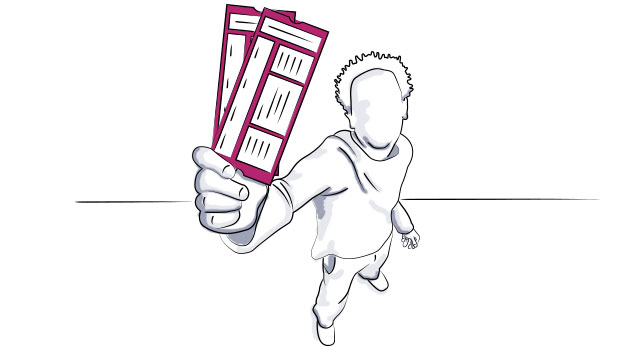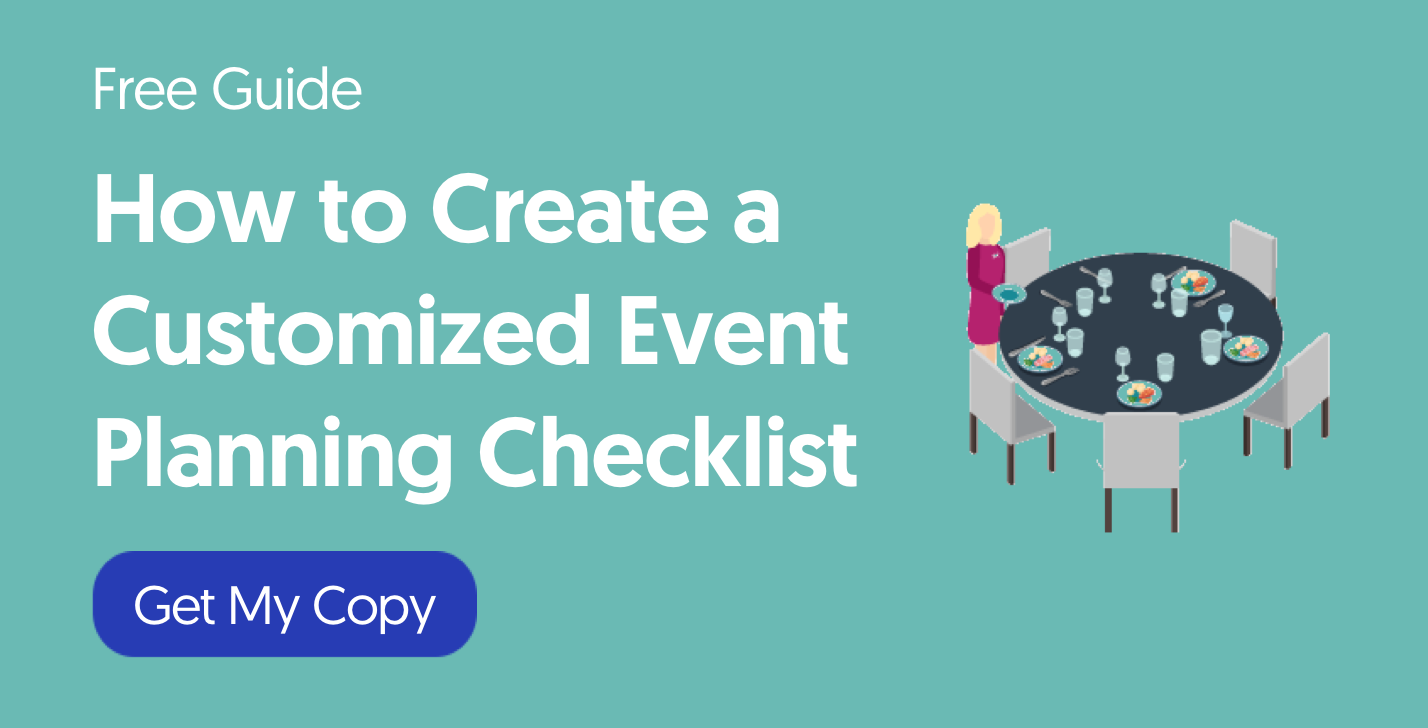
How to Create the Best Event Logo: The Ultimate Guide
Why are event logos important? Humans process and store images 60,000 times faster than text. This means that event logos help potential attendees comprehend and remember an event’s name, purpose, and identity more effectively than any other branding tool. Which is why we’ve compiled these 10 simple methods to make impactful event logos. Discover principles, exercises, and tools that will help you create the best event logo for your goals.
Discover 10 easy ways to make the best event logo
Create the best event logo with ideas and exercises for designs that grab attention and communicate what your event is all about.
1. Brush up on event logo design basics to create the best event logo.
Use basic logo design principles to create an image that looks great, represents the brand well, and helps achieve event goals. Check off each of the following list items to come up with a highly effective event logo:
- Pick only one or two standout features such as a neon color or a custom-made font and keep the rest of the design minimalistic.
- Test the readability of your logo design at 7% and 500% of its original size to see how it looks on surfaces as small as pens or as large as billboards.
- Consider what feelings you want to invoke in future event attendees to guide your shape, font, and color choices.
2. Decide which type of logo you need.
Choose one of the five main types of logos for events based on the benefits they provide to supercharge the effectiveness of your design:
- Lettermarks event logo: Create a logo using only the event’s initials for easier printing and recognition – especially if your event name has more than three words.
- Wordmarks event logo: Turn the entire event name into a logo with interesting fonts and colors to establish event brand identity in the first few years.
- Pictorial marks event logo: Design a minimalist, single-image graphic of a well-known object associated with your event audience or topic to refresh your established brand. If you can’t decide between two different brand symbols, find a way to combine the two as Cork and Cow did for their clever bull horn and wine glass pictorial marks logo.
- Abstract event logo: Draft a symbolic single-image graphic that is completely unique to your event brand to have complete control over its meaning and emotions. Use it further attribute meaning to abstract event names.
- Combination event logo: Add a lettermarks or wordmarks logo to a pictorial or abstract logo and reap the benefits of both.
Keep in mind that if you choose to include any symbols or images, it’s best to make them look as if they are in motion. For example, the former Twitter bird logo sat on a branch. Today’s Twitter bird logo looks as if it is midair. The latter is far more active and indicates forward motion, which is especially important for event brands who strive to become marketplace trendsetters or industry leaders.
3. Tie in the event’s mission and values to make the best event logo.
Make color, shape, font, and image choices based on the event brand’s identity. For example, Chipotle’s mission statement is Food with Integrity. Which is why they chose a round logo image, which represents unity and positive interpersonal connections. They also use two different shades of red, a color known to boost appetite. Plus the brand name uses Gotham bold font which symbolizes hard work. All of these elements come together to create a fully developed and detailed brand story.
4. Review your brand architecture if your logo will represent more than one event.
Analyze the full scope of events this logo will cover. Brainstorm designs that tie them all together to gain better marketplace clarity and cross-sell to attendees. Choose to slightly edit one main logo for each event iteration, create one all-purpose logo to cover the full suite of events, or use a hybrid structure with a single throughline for multiple unique designs.
5. Understand brand psychology to create the best event logo.
Motivate brand loyalty through logo design by defining your event’s five main psychological impact categories, which include: sincerity (honest), excitement (daring), competence (reliable), sophistication (glamorous), and ruggedness (strong). Apply hues, words, shapes, and symbols that invoke attendee confidence about your event in each of these key areas. Remember that event-goers may not always remember your brand’s name or logo but they will recall how you made them feel.

6. Learn color theory.
Reference this quick guide to the benefits of each color in event logo design and boost your symbol’s emotional impact:
- Red event logos represent high energy excitement.
- Orange event logos instill enthusiasm and playfulness.
- Yellow event logos symbolize cheerfulness and positivity.
- Green event logos bring out feelings of peace and a sense of refreshment.
- Blue event logos inspire calm and confidence.
- Purple event logos promote creative inspiration.
- Gray event logos invoke respect and trust.
- Brown event logos make attendees feel safe.
7. Use the three-circle strategy to create the best event logo.
Create a three-circle Venn diagram. Label each circle as why, how, and what. Fill the why circle with words or short phrases that represent why you plan to host this event and why your target audience should attend. Then, write out what qualities you and your brand represent that determine how you plan to make this event successful. Finally, list exactly what the event will be about.
Look for overlap between all three circles and use these big ideas to come up with design elements that symbolize them. Doing so will create a throughline between your goals, brand identity, and event offerings within your logo.
8. Compare and contrast direct competitor event logos.
Make a list of the top five events most similar to your event type, theme, audience, size, and industry. Create a chart with each event’s logo at the top of a column. Label the rows: event logo type, text, font or fonts, primary color, secondary colors, primary shape, secondary shapes, and images. Break down each logo design using this chart to see their elements displayed side by side. Make note of any overlapping design trends between them.
Consider which commonalities you want to include in your design to help audiences understand where you fit in the marketplace. Or avoid them altogether to make your event logo stand out.
9. Choose the right typography.
Pick one of these main font categories to help you achieve your event logo goals:
- Serif: Select traditional and professional fonts such as Times New Roman to associate your event with these values.
- Sans Serif: Incorporate clean and modern fonts such as Calibri to associate your event brand with security.
- Script: Add creative and airy fonts such as Lavanderia to attract potential Generation Z attendees.
- Modern: Use a stylish and curvy font such as Century Gothic to appear strong and progressive.
- Display: Insert friendly and expressive fonts such as Giddyup to stand out from the crowd.
Make any font within the above typography categories bolded if you want to emphasize a keyword in the title or italicized to throw focus back on to other logo elements.
10. Discover how proportion and symmetry work to make the best event logo.
Design your event logo using a grid tool to help visualize your central point of focus and decide which proportions work best for your needs. Choose a symmetrical design layout to associate your event brand with nature, invoke calm, and instill a sense of balance. Choose an asymmetrical design layout to make a unique event logo that grabs attention. Also, pay attention to any negative space in your event logo. For example, many people know of FedEx’s famous negative space arrow located between the last two letters of their logo.
Explore the best event logo examples and why they worked
Discover these aspirational event logo designs and find out what makes them great so you can apply their ideas to your own creation:
- CES uses an asymmetrical layout and shapes to promote their event’s playful and imaginative brand. Notice how they balance this with a professional and trustworthy Sans Serif family font. Mix playful and serious elements into your own event logo to create the same effect.
- South by Southwest has a combination letter marks and pictorial logo in black and white font. Make your text capitalized, evenly spaced, and symmetrical to represent the balance between all the different industries or focus topics at your event just like they did.
- Adobe Summit boasts a colorful and unique event logo that inspires creativity in viewers. They keep their font, name, and rainbow colors the same every year but change up the specific design. Build your own brand recognition but keep it fun and fresh year after year by taking a page from their logo design book.
Check out these free tools you can use to create the best event logo
Take advantage of these free tools that use simple drag and drop features and templates to help bring your event logo ideas to life as quickly and easily as possible.
- Design Evo has hundreds of searchable event logo templates in a variety of categories and styles.
- Logogenie uses a simple three-step event logo creation process you can use to draft a design in minutes.
- BrandCrowd lets you customize one of many premade designs that take the guesswork out of event logo creation.
Conquer your event objectives with the best event logo and marketing practices
Now you know ten simple steps to create the best event logo. You also have some real-world examples and free tools to guide you further through the process.
Up next, supercharge your event results with these great event marketing examples. And don’t forget to check out these B2B event trends that will help get more eyeballs on your event logo and increase ticket sales.

